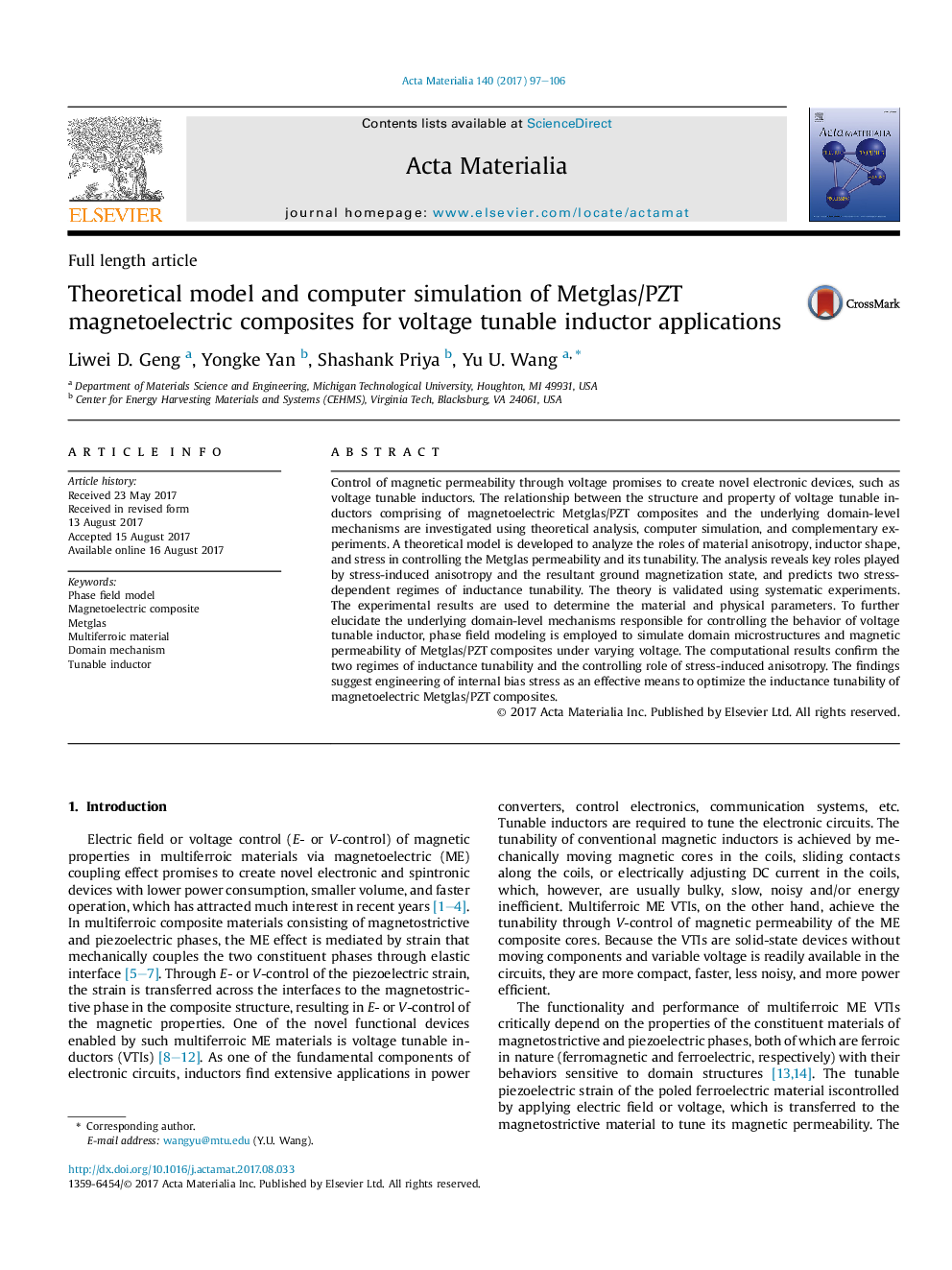| Article ID | Journal | Published Year | Pages | File Type |
|---|---|---|---|---|
| 5435758 | Acta Materialia | 2017 | 10 Pages |
Control of magnetic permeability through voltage promises to create novel electronic devices, such as voltage tunable inductors. The relationship between the structure and property of voltage tunable inductors comprising of magnetoelectric Metglas/PZT composites and the underlying domain-level mechanisms are investigated using theoretical analysis, computer simulation, and complementary experiments. A theoretical model is developed to analyze the roles of material anisotropy, inductor shape, and stress in controlling the Metglas permeability and its tunability. The analysis reveals key roles played by stress-induced anisotropy and the resultant ground magnetization state, and predicts two stress-dependent regimes of inductance tunability. The theory is validated using systematic experiments. The experimental results are used to determine the material and physical parameters. To further elucidate the underlying domain-level mechanisms responsible for controlling the behavior of voltage tunable inductor, phase field modeling is employed to simulate domain microstructures and magnetic permeability of Metglas/PZT composites under varying voltage. The computational results confirm the two regimes of inductance tunability and the controlling role of stress-induced anisotropy. The findings suggest engineering of internal bias stress as an effective means to optimize the inductance tunability of magnetoelectric Metglas/PZT composites.
Graphical abstractDownload high-res image (179KB)Download full-size image
